When it comes to seaweed, how many types can you list? Today, thucphamkho.vn would like to share with you a collection of edible seaweeds in Vietnam and Japan that are delicious and nutritious, helping you list them in the most complete way!
I. Summary of edible seaweeds
Seaweed, commonly known as seaweed, is a special product harvested from the ocean. They live and grow seasonally or year-round, widely consumed in Japan, Korea, China, …
They come in many different shapes, colors, and flavors, but not all of them are edible. So, let’s find out some types of edible seaweed right here:
1. Wakame seaweed
Wakame is a type of seaweed common in the temperate, cold waters of the Pacific Northwest, the Sea of Japan, appearing mainly in spring. Mature plants can be up to 1m tall, in the form of edible seaweed, both plants and roots, when encountering boiling water, will turn bright green.
Also known as Miyeok or sea mustard, is produced in dried form into long, slightly shriveled strands. They contain high nutritional content, are often used in soups, or mixed with sesame oil, chili, pepper, .. to eat raw as a vegetable.
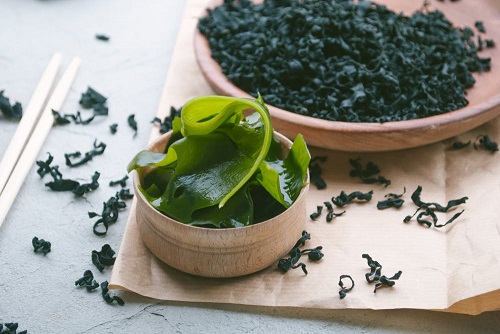
2. Arame seaweed
Arame seaweed is commonly found in Asian cuisines. It is purchased as a dried product or processed into a dark brown fiber. When eating, you can feel the light sweetness, easy to eat.
Similar to Wakame, Arame seaweed contains many nutrients that are good for the body. Often cooked in soups, stews or prepared delicious stir-fries.
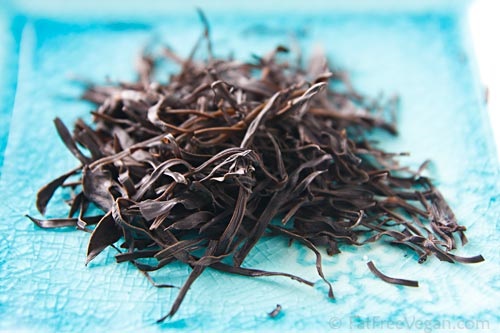
3. Hijiki . Seaweed
With a characteristic dark brown color, Hijiki seaweed has a small, short fiber form. They are usually sold in dried form on the market today. When used, need to soak and process normally like other types of seaweed.
Hijiki are suitable for living in warm environmental conditions such as the Pacific Ocean, the Seto Inland Sea and the southern sea of Japan. From spring to summer is the perfect time to enjoy the freshest Hijiki seaweed.
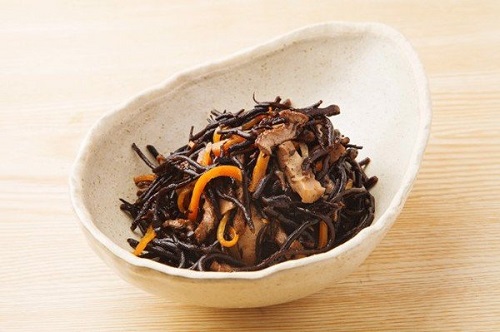
4. Kelp
The most common and easy-to-find seaweed is kelp, which is classified as brown algae. Kelp is suitable for growing in shallow seas, with temperatures ranging from 7-14 degrees Celsius.
Kelp is easy to identify with its characteristic green color. Often used to cook soup, stir-fry with meat, … Helps provide essential minerals and vitamins for the body.
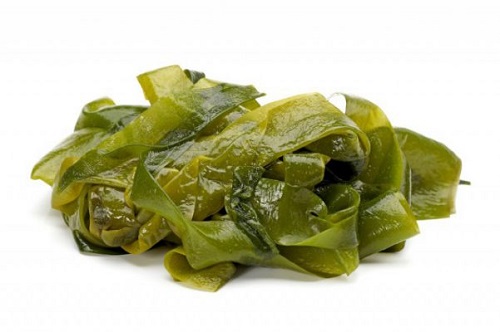
See more: Summary of delicious dishes from brown rice to help lose weight easy to make at home
5. Kombu . Seaweed
Kombu seaweed belongs to the group of brown algae, kelp, growing in the sea from 5-7m deep, the smallest kombu seaweed found is 2m, the longest is 10m, about 60cm wide.
Most commonly found in the northern seas of Japan. It has the highest calcium content of all seaweeds.
When eaten, it usually has a natural aroma, no fishy smell and has a sweet taste. So it is preferred when making soups, soups, stews…
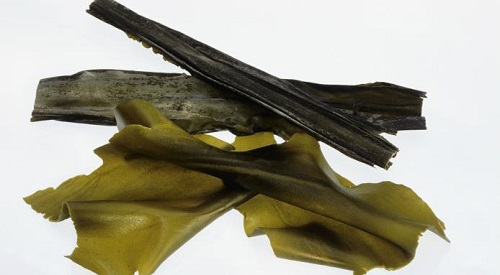
6. Spirulina
Also known as spirulina, the scientific name is Spirulina Platensis, is considered a panacea, a super food beneficial to the body. Structure of filamentous algae body, twisted like a spring. Spirulina is green in color. The size is very small, only 0.25mm, so it can only be observed under a microscope.
Usually sold in powder form and widely distributed in the market by workshops. In addition to Japan, spirulina is also found in the US, Canada, Taiwan, etc. They can live in both saltwater and freshwater environments.
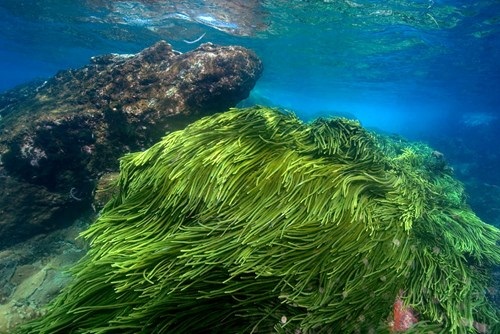
7. Klamath Seaweed
As a type of green algae, they are found in the Upper Klamath Lake area – Oregon (USA). Klamath seaweed is processed in powder form, pressed into pellets and sold quite popularly in the market.
Klamath contains a large amount of minerals, antioxidants and many vitamins that are good for the body.
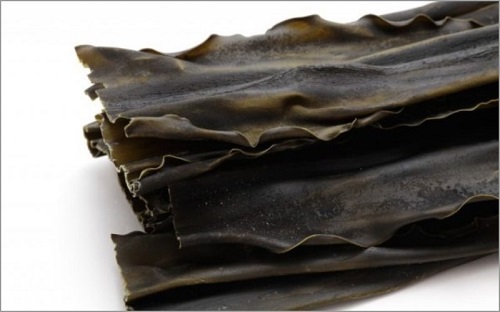
8. Nori . Seaweed
Nori seaweed has its own characteristics with dark green color, strong fishy smell, easy to smell, slightly brackish taste of sea water, which is considered a bit difficult to eat for those who eat it for the first time. Although it has a dark green color, Nori seaweed is classified as red algae.
They are widely used as instant dried seaweed, or nori rolls with rice, sushi or as a decoction.
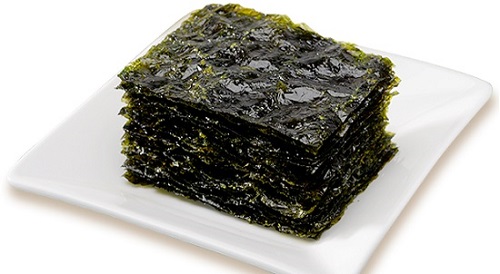
9. Kanten Seaweed
This is a less common type of seaweed than the previous ones, because the taste is not specific. However, they contain coagulants, so they are often used as raw materials for making jelly products.
Kanten seaweed is often added when cooking soy milk, soups, salads or juices.
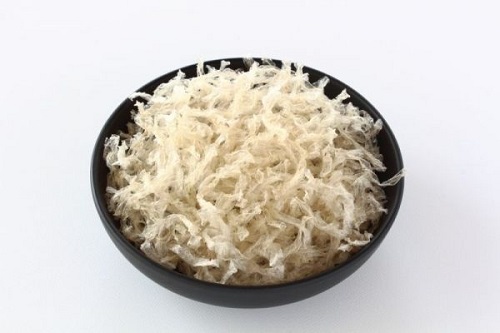
10. Red Dulse Rong
Rong biển đỏ là một loại rong biển trong họ Palmariaceae, được biết đến với nhiều tên gọi khác như Palmaria palmata, dillisk hay dilsk, creathnach, .. có vị đặc trưng của biển, hơi mặn.
Xuất hiện chủ yếu ở Bắc Âu, rong biển Dulse đỏ được tìm thấy ở các vùng ven biển. Được coi là có hàm lượng sắt cao nên được kết hợp với các loại đậu khi chế biến các món ăn và ngũ cốc, súp rong biển, hoặc nước sốt.
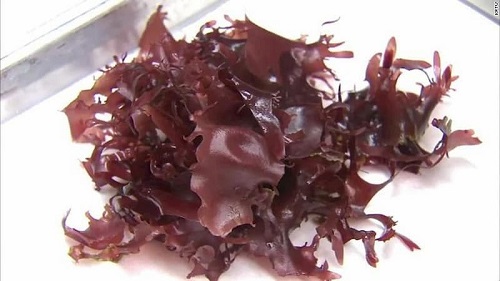
11. Mozuku Seaweed
Usually found in the southernmost part of Okinawa Japan. Dark brown or dark black, soft and thin body. It is considered to be the most delicious flavored seaweed.
They grow in the spring every year, when Mozuku is at its peak and the nutritional value is also higher. This type of seaweed can be used as the main ingredient for soups, porridges… Has a positive effect in the process of burning fat, strengthening minerals, moisturizing…
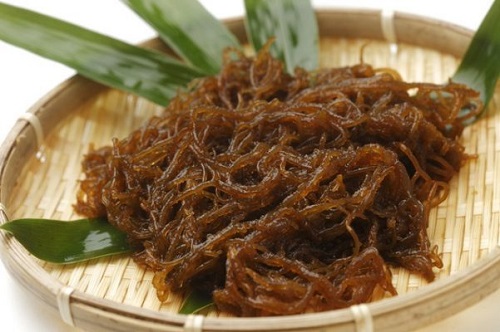
12. Tosaka Seaweed
Tosaka seaweed is known for 3 types: red, blue and white. But in general, they are all classified as red algae, shaped like a chicken’s crest.
Tosaka when eaten raw they will retain their original red color. When exposed to high temperatures during processing, they will gradually turn green. In the case of preliminary processing, treatment through Tosaka lime water will turn milky white.
With a similar taste to other types of seaweed, they are eaten raw mainly. Become a familiar ingredient in salads, or soups.
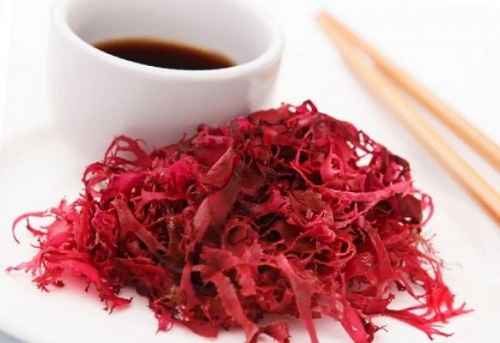
13. Ogonori Seaweed
This type of seaweed has a brownish green color, long and small fibers. When eaten, it has a certain delicious and crispy taste. They are dried and can be stored for a long time.
You will find them used to mix salads and salads in a popular way with the same nutritional value as other types of seaweed.
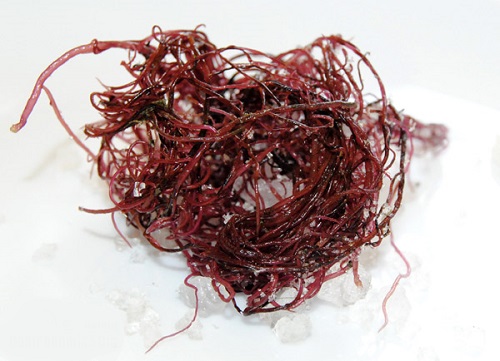
14. Grape seaweed
In our country, grape seaweed is exploited quite a lot, especially in the South Central Coast. They have a beautiful green color, with tiny round seeds, clustered in clusters, so they are called grape seaweed or green caviar.
Grape seaweed grows well in the fall to spring next year, with warm temperatures. Although they have an eye-catching shape, they have a slightly difficult, slightly fishy taste, suitable for mixed salads, seafood soups, served with some other vegetables or tofu to balance the taste.
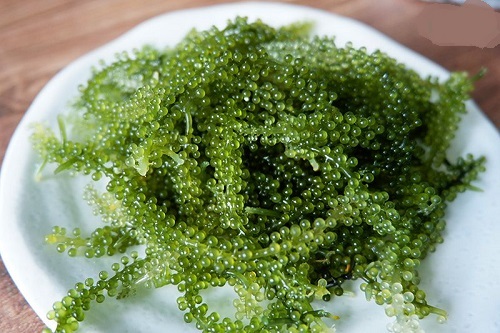
See more: Where to buy reputable quality grape seaweed in Hanoi and Ho Chi Minh City?
15. Golden Seaweed
Yellow thread seaweed is different from most other seaweeds. They have a natural mild sweetness and no fishy smell. Has a positive effect in cooling and clearing body heat.
This is a small, thread-like seaweed with a characteristic light yellow color that is easy to recognize.
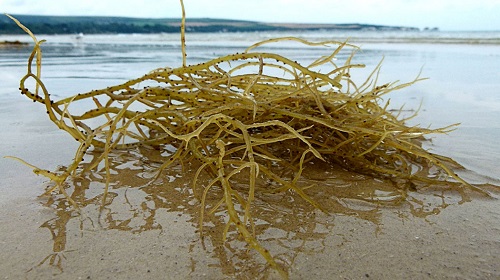
16. Brown seaweed
Is a species of seaweed that grows mainly in the waters of Japan, Korea and China, also known as Fucus vesiculosus or bladderwrack.
They show many effects in the process of burning excess fat, actively supporting the treatment of cardiovascular diseases, cancer, arthritis, … very good for the body.
Brown seaweed is often used in Asian dishes, pickled, or eaten raw.
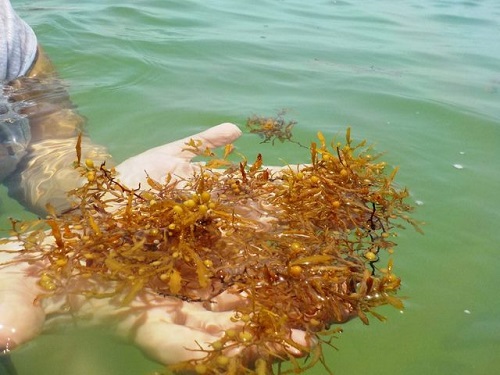
17. Irish Seaweed
Irish seaweed or Irish moss, sea moss, is found in the Atlantic coast areas of Ireland, Europe and the United States. Has a characteristic taste of seaweed, pleasant aroma, easy to eat.
This type of seaweed is often used as an additive used in the preservation of the quality of processed foods, and contains ingredients that have a natural thickening effect.
They have the ability to support the treatment of thyroid diseases, supplement essential minerals for the body, … can be used to eat raw
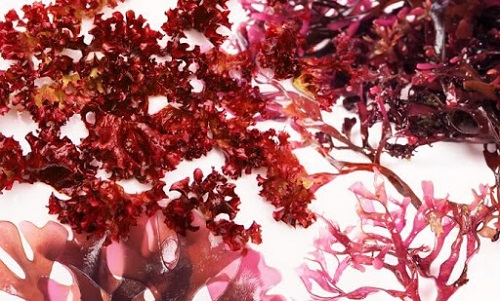
18. Seaweed Carrageenan
Carrageenan seaweed is known as an extremely valuable source of raw materials with the ingredient being Carrageenan – a biofilm forming compound commonly used in the food industry to create coagulation or uniform flexibility. In addition, it is also widely used in medicine,…
They are grown and harvested a lot in the US and Western European countries, in Asia such as China, the Philippines, Japan…
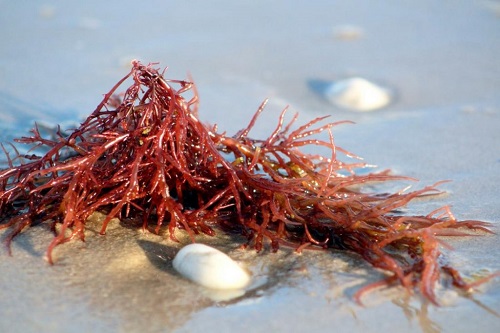
19. Rong Bladderwrack
Bladderwrack is brown, also known as rockweed, red fucus, rock wrack, black tang, and bladder fucus. When mature, they can grow to about 90cm tall. Grows along the Pacific, Atlantic, United States, Canada, …
Bladderwrack seaweed contains a lot of fiber, vitamins, minerals and other compounds that are believed to have health benefits. They are produced in the form of powdered, dried seaweed, which is also used as a tea.
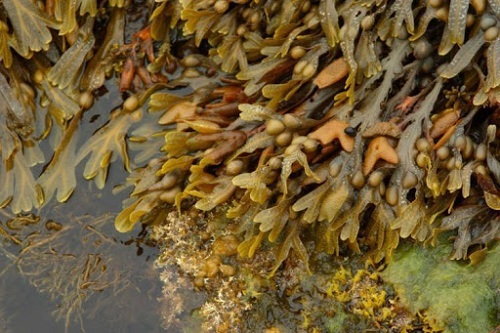
20. Sea lettuce
Sea lettuce is a type of kelp, a type of green algae common on the coasts of the world. They are found to be quite similar in appearance to ground lettuce.
According to some studies, they contain ingredients that are beneficial to the body, rich in nutrients and support to increase resistance. A favorite ingredient in seaweed salads, soups, and even used in ice cream making.
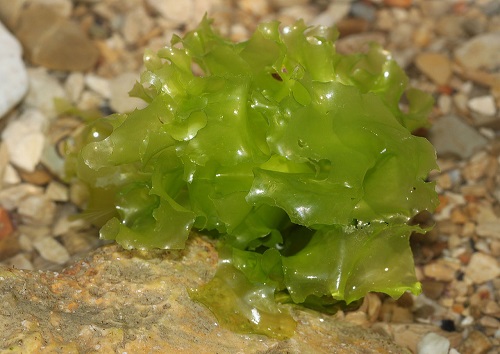
II. Types of seaweed in Vietnam
In the waters of Vietnam, there is a warm tropical climate that is very suitable for seaweed to grow and develop. Typically, grape seaweed, Kanten seaweed, kelp, Wakame seaweed, yellow seaweed.
With these types of seaweed, you can make soups, seaweed salads, seaweed soups, or simply drinks like ginseng water.
III. Types of seaweed in Japan
Popular types of seaweed in the Sea of Japan, bred and cultivated on a large scale include Wakame seaweed, Nori seaweed, Kombu, Kanten, Hijiki, Mozuku, Tosaka, or Ogonori seaweed.
Some are commonly used for sushi rolls, rice rolls, salads or sashimi,..
With the information that thucphamkho.vn has just shared about delicious and nutritious edible seaweeds in Vietnam and Japan, hopefully can help you get more useful information!






















 Tiếng Việt
Tiếng Việt